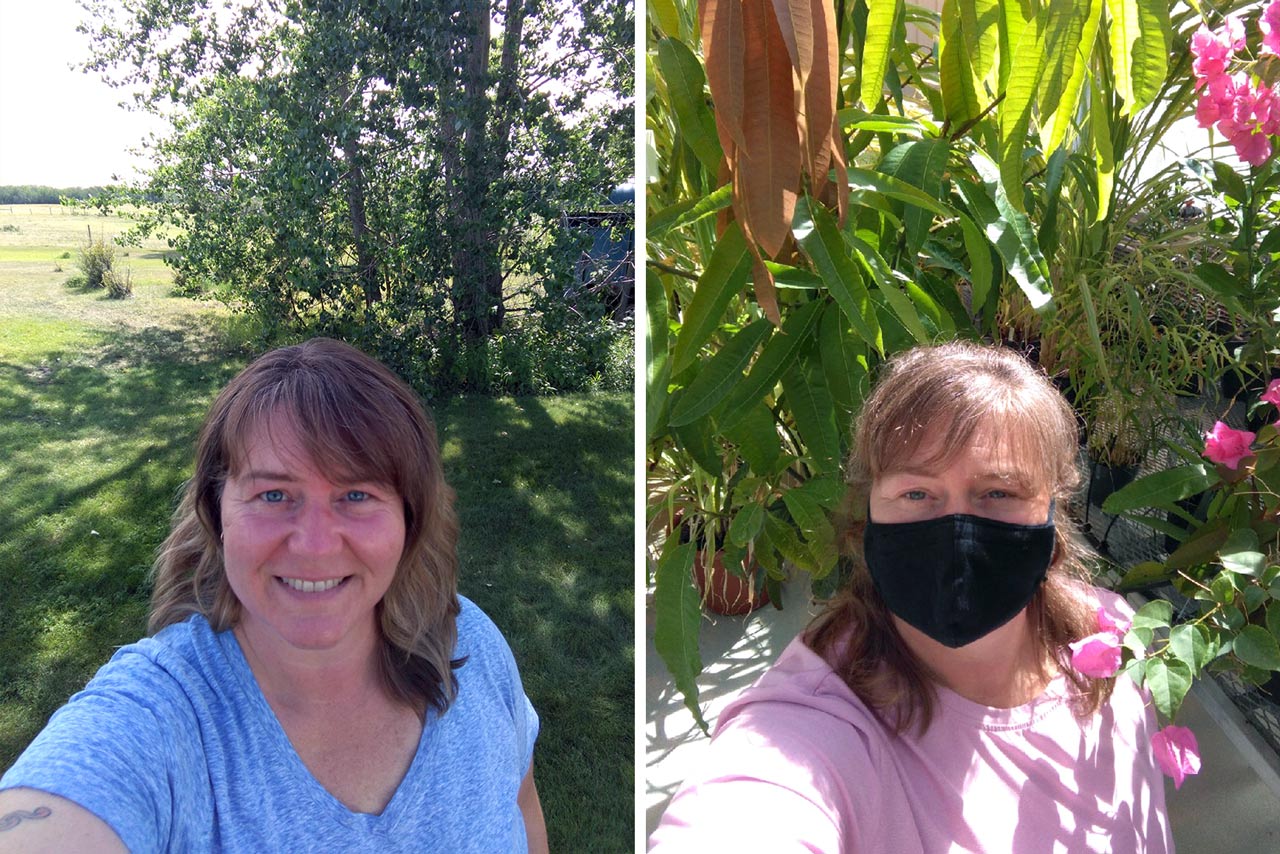
Keeping plants green during COVID-19: Employee profile with Sue Johnson
As the Department of Biology’s plant growth facility manager, Sue Johnson ensures that students and scientists have the plants, materials, supplies and supports they need for their studies and research.
By Chris PutnamShe manages the 5,000-square-foot, digitally controlled greenhouse on the rooftop of the Collaborative Science Research Building—overseeing the growth of hundreds of plants “from seeding to ceiling,” as she puts it.
When most buildings at the University of Saskatchewan (USask) shut down this spring due to COVID-19, the greenhouse plants depended on Johnson to stay alive. She is part of a core group of essential USask employees who have continued working on campus throughout the pandemic.
Johnson answered some questions about her experience by email.
How did your job change when the COVID-19 pandemic arrived?
It didn’t change so much as it coalesced. Much of the knowledge of infection control that I gained over years in the animal world directly transfers to plants, and not surprisingly, humans. Combine that with my introversion and it was like I had trained for this my whole life.
I worked more days, because the wonderful casual staff, whom I miss, were sent home out of an abundance of caution very early on. I managed to stay ahead of most of the pandemic mandates as they unfolded. There is definitely more sanitizing, but there was a pretty strong program in place up here prior, so adapting to new routines flowed pretty easily.
Were there extra challenges during those early weeks of lockdown?
The early weeks were spent assessing plant and seed stocks and using matrices to determine what goes and what stays. There were many unknowns at that point so there were several scenarios to consider, ranging from total shutdown and depopulation, to classes going ahead as normal in September, and everything in between. Planning and planting for labs begins up to six months ahead to ensure the right growth stage for the botanical teaching need. Planning for all labs in a curricular year at once with no actual lab dates was an experience I don’t want to repeat.
Having just started the life (both mine and the plants’) in this new greenhouse in the beginning of 2019, I was not particularly keen to let a year and a half of work and growth be wasted, especially with the unknown of when we would be in full swing again. It’s normal to have cycles disposing of plants that are at end of term, but it was more disappointing to see them unused first, due to the late-March lab shutdown.
During the assessments, when I needed a mental break, I installed the automatic watering system and formatted the programming, adjusting as needed along the way. In between and around these big projects, I got to work with Ian Robertson and Matt White from Arts IT on a pretty significant glitch of the computer controls system, and it all worked out in the end—Ian was awesome and, yes, this is a two-thumbs-up to all the IT who made things happen all over campus for everyone.
What is it like working on campus these days?
It’s still amazing. I feel like I’m just on the away team. My cohorts, coworkers, supervisor and administration are a dedicated, intelligent, sometimes humorous and always inspiring bunch of coconuts. None of this is an easy situation in so many ways for anyone who works at USask, and yet I see and hear people are stepping up every day in every way.
Of course it’s still quiet, but definitely picking up. I do think there are now more people than gophers. Last week was the first time I noted my parking lot looked “summer full”.
I’m getting more reality facetime, having those little unexpected “hallway hello” catch-up moments with work family that I think everyone is missing. I’m very grateful to have this role, and an out-of-house work balance, because I would have spent too much money online shopping otherwise.
